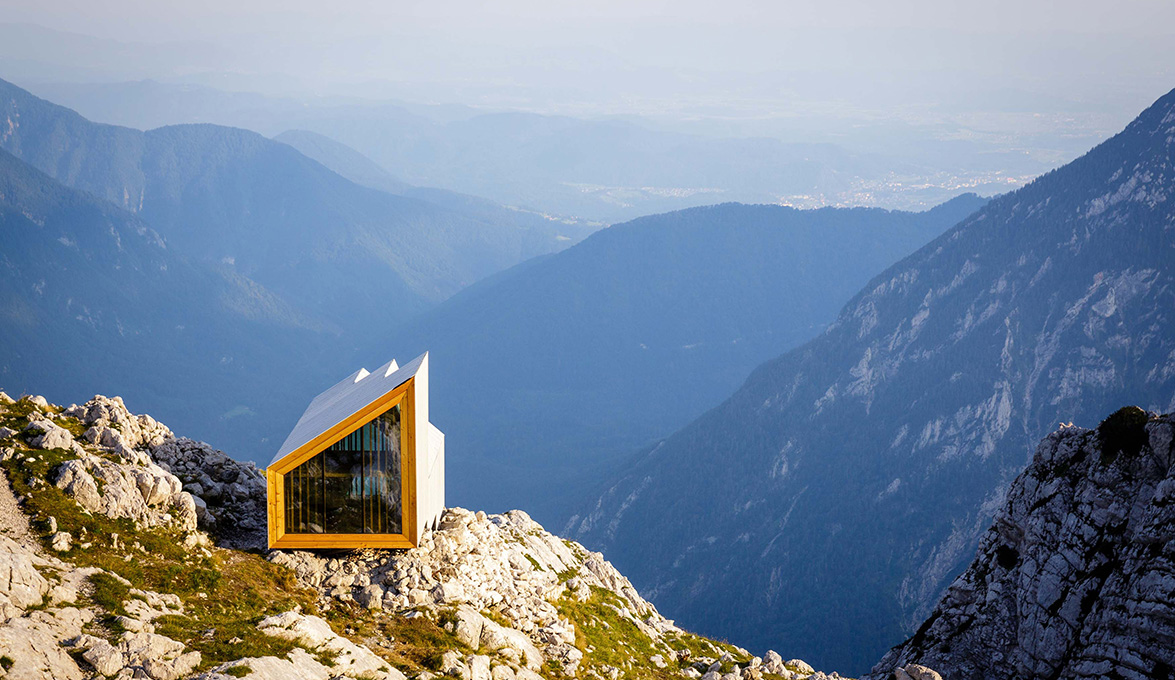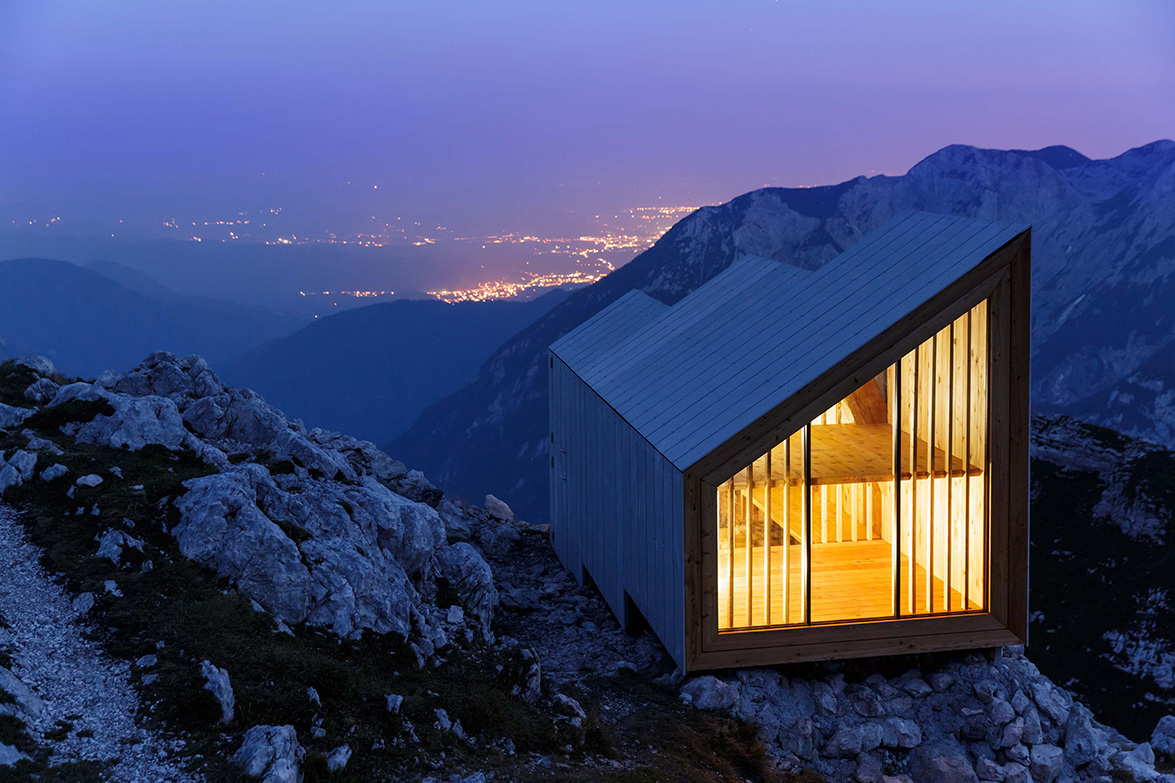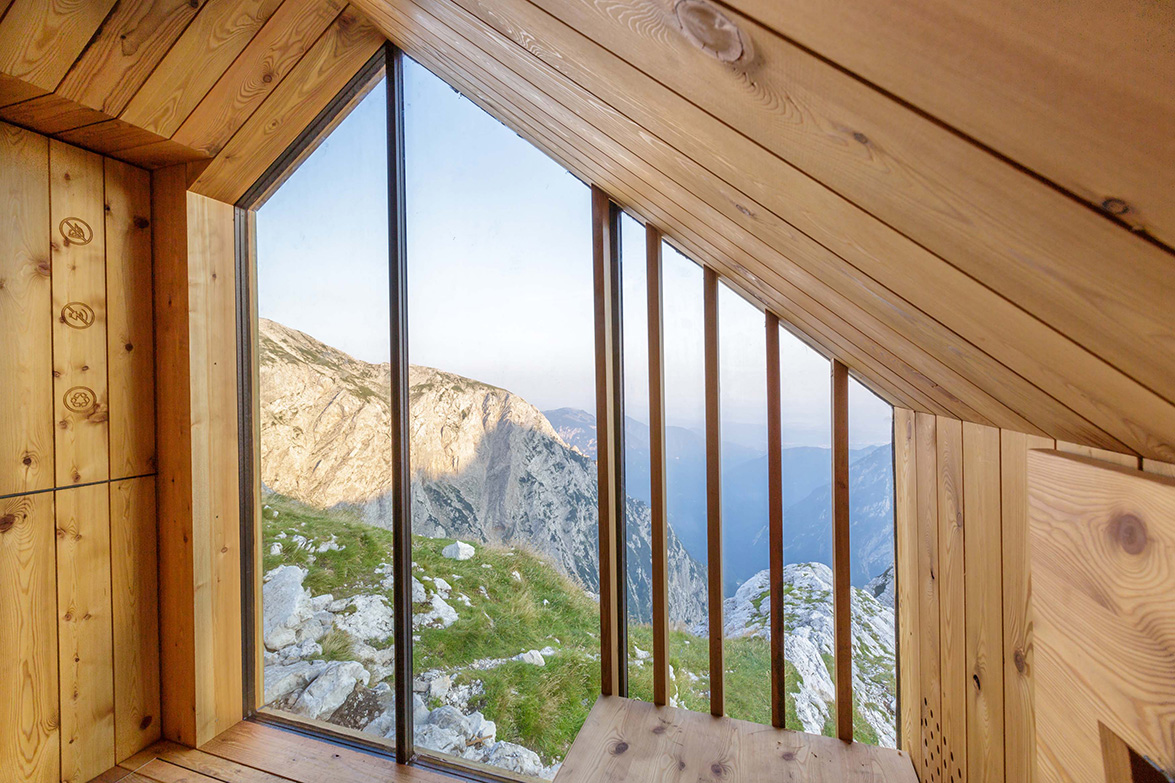Building Materials tested in extreme weather conditions at an Alpine shelter in Skuta, Slovenia

Guardian Glass in Europe, a leading manufacturer of high performance architectural glass and a key supplier to the building industry, has demonstrated the superior performance of its fenestration glass products in an ambitious Alpine shelter project in Slovenia.
The project was initiated by OFIS Architects in Ljubljana, Slovenia, to help research the impact of extreme weather conditions on different types of materials and construction techniques. The modern shelter was designed in the fall of 2015 in the studio ‘Habitation in Extreme Environments’ at the Harvard Graduate School of Design. Chosen from a number of designs submitted by the architecture students, the proposal of Katie McDonald, Erin Pellegrino and Frederick Kim was further developed. The fully finished construction is now located high on Skuta Mountain in the Slovenian Alps, where weather conditions are extreme and harsh. Among the projects requirements was that the bivouac needed to provide a safe, comfortable environment for up to eight people.
The initiators of the project, Špela Videčnik and Rok Oman, co-founders of OFIS Architects, worked with London-based structural engineers AKT II Ltd. and Rieder eco skin to refine the project. For the fenestration they selected Guardian Glass as a key partner, because the company is among the most experienced and technically skilled glass providers in the world.


With the chosen site located more than 2,000 metres above sea level, the tempered safety glass used in the shelter needed to be able to withstand a design wind load estimated at 2,3 kN/m2, more than double than required for high-rise buildings in major cities. The glass also needed to provide superior thermal insulation and solar control performance, good safety and security, and be able to cope with the stresses of very high elevations and extreme temperatures.
Guardian's experts worked with OFIS and AKT to come up with the optimum window materials and construction. During the process they had to take into account key factors such as thermal insulation and solar control, as well as other functional considerations, such as appearance and clarity of vision.
Triple glazing was installed with a U-value of 0,5 W/m2K and a solar factor of 33%, to reach an optimum energy balance all year round. The primary coated glass chosen was Guardian's spectrally selective SunGuard® SuperNeutral® 70/37 glass on the outer pane, combined with ClimaGuard® Premium T low-emissivity glass on the inner pane, resulting in 59% visible light transmission in the final triple glazing configuration, which is considered unusually high given the very low solar factor.
Key benefits of the glass are its neutral appearance so the bivouac blends in as much as possible with the nature around it, low reflection outside for the best possible view in, and low reflection inside allowing occupants to enjoy the surrounding views both during day and night. “We wanted you to feel that you were still very much one with the landscape. Guardian Glass was a huge help in enabling us to realise this.” said Erin Pellegrino, one of the student designers at Harvard University.
Domen Komac, European Integrator Manager for Guardian Glass said: “Despite its relatively small size, this project was no less demanding than any large building project. Maintaining a comfortable and safe indoor environment was a challenge, especially in these extreme conditions. Thanks to our broad product range, combined with the know-how of our experienced technical team, Guardian Glass was able to fulfil all the criteria of this high profile project.”
The eight-person bivouac, Alpine Shelter Skuta, features large windows at both ends with Guardian SunGuard® and ClimaGuard®, affording its occupants sweeping views of the surrounding mountains and valleys.
Source: Guardian Glass
Photos: Anže Čokl
Visit the Guardian Glass website
News Infurma:
Online Magazine of the International Habitat Portal. Design, Contract, Interior Design, Furniture, Lighting and Decoration
